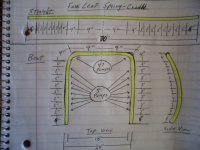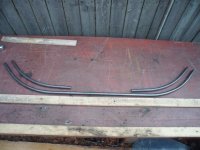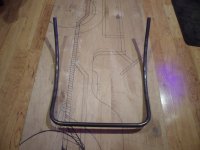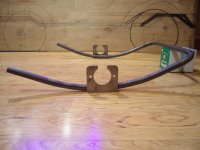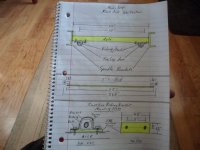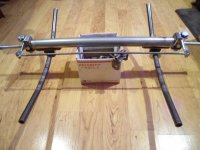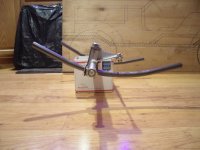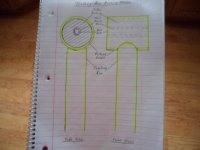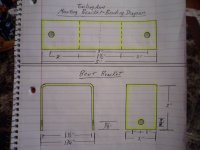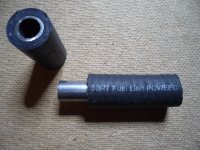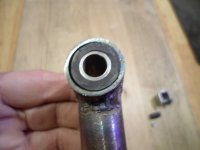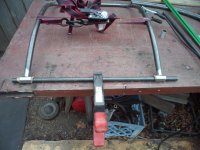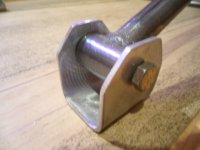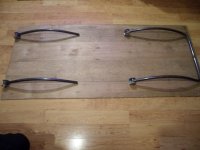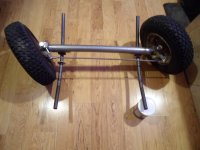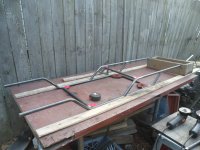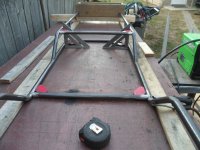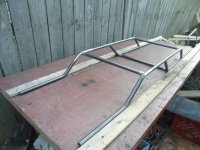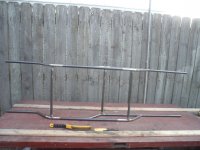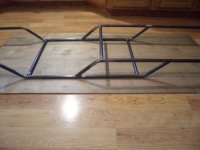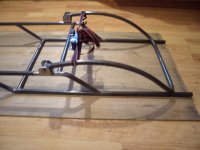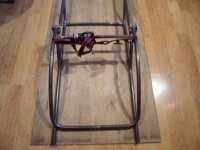Functional Artist
Well-known member
So now, we have (2) 2-dimensional frame rails
...& when we connect them together, with a few cross bars, we'll have a 3-dimensional tubular frame (aka Space Frame)
Where these rails "go" is represented by the dashed line, in this drawing
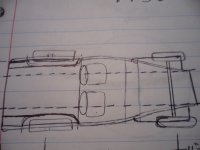
This drawing gives a rough idea of the suspension concept that I'm going to try-n-use
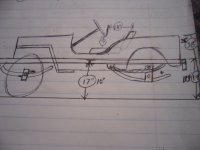
I made up a "model" of my faux Leaf Spring Trailing Arm idea (It will help, with the orientation of the curves, for bending)
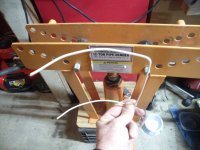
The original idea was to use this curved trailing arm idea, for both the front & rear suspensions
...but now, I'm thinking about possibly splitting the front "cradle" into pieces, to allow for some "flexibility"
So, to try this idea, I cut a couple of 24" pieces
...marked them (as per the bending diagram)
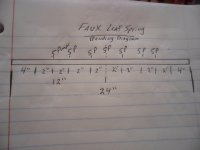
I applied (5) pumps at 2" intervals (leaving 4" alone on each end)
Here is the difference between a bent piece
...& unbent piece
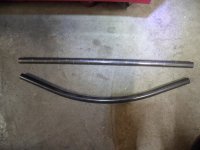
...& when we connect them together, with a few cross bars, we'll have a 3-dimensional tubular frame (aka Space Frame)
Where these rails "go" is represented by the dashed line, in this drawing

This drawing gives a rough idea of the suspension concept that I'm going to try-n-use

I made up a "model" of my faux Leaf Spring Trailing Arm idea (It will help, with the orientation of the curves, for bending)

The original idea was to use this curved trailing arm idea, for both the front & rear suspensions
...but now, I'm thinking about possibly splitting the front "cradle" into pieces, to allow for some "flexibility"
So, to try this idea, I cut a couple of 24" pieces
...marked them (as per the bending diagram)

I applied (5) pumps at 2" intervals (leaving 4" alone on each end)
Here is the difference between a bent piece
...& unbent piece



